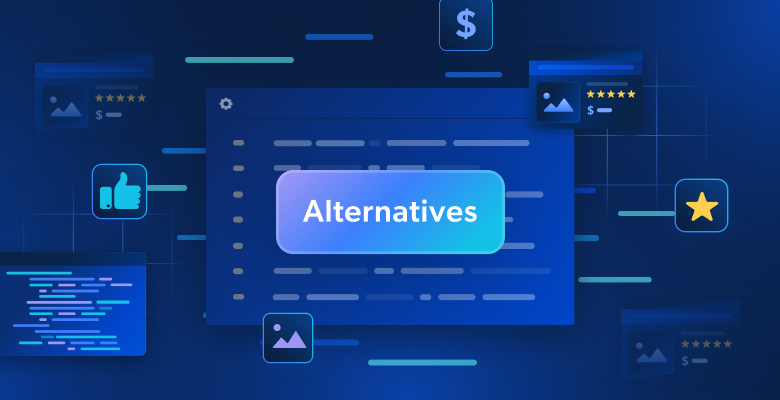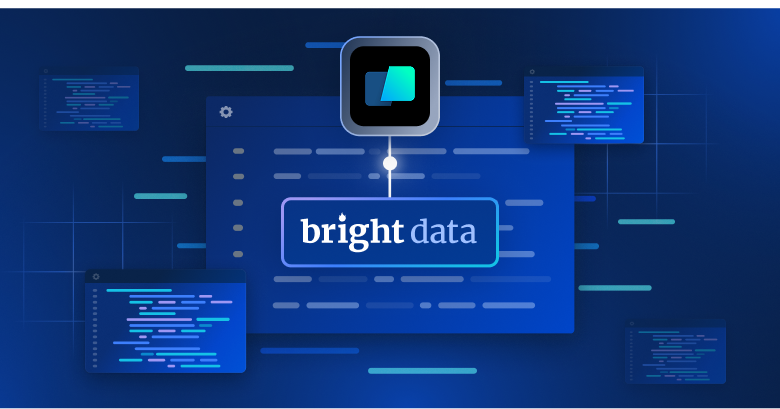The browser automation landscape has evolved dramatically. In 2026, choosing the right tool for testing websites, scraping data, or automating workflows can significantly impact your success. Let’s explore the 7 most effective browser automation tools available today.
What is Browser Automation?
Browser automation involves programmatically controlling web browsers to replicate human interactions—such as navigating to pages, filling out forms, clicking buttons, and extracting data. Unlike basic HTTP requests, browser automation tools can execute JavaScript, render complete pages, and interact with dynamic elements, effectively simulating real user behavior.
This capability enables the automation of repetitive tasks, comprehensive testing, and large-scale data collection. Many modern solutions utilize headless browsers (browsers without a graphical user interface) to improve performance and resource efficiency.
If you’re curious, check out this guide on the best headless browsers for scraping and testing to see which ones offer the best performance and integration features.
Why Use Browser Automation Tools?
- Handle Dynamic Content: Modern websites often load data asynchronously using JavaScript frameworks like React or Angular. Browser automation tools can render these dynamic pages fully and wait for specific elements to appear, enabling the extraction of content not present in the initial HTML source.
- Cross-Browser Testing: Browser automation facilitates testing applications across different browsers and environments, ensuring consistent user experiences regardless of the platform.
- Automate Complex Interactions: These tools can navigate multi-step workflows, manage authentication processes, interact with form elements, and maintain state across pages, effectively simulating realistic user journeys.
- Anti-bot measure Management: Modern websites implement anti-scraping techniques like IP blocking, browser fingerprinting, and CAPTCHA challenges to prevent automated access. Modern browser automation solutions can mimic human behavior patterns, manage browser fingerprints, and even solve CAPTCHAs automatically, thereby bypassing these defenses.
What to Consider When Choosing a Browser Automation Tool
When selecting a browser automation tool, it’s essential to evaluate several key factors to ensure it aligns with your project’s requirements:
- Core Capabilities: What unique features and functionalities does the tool offer?
- Supported Browsers: Which browsers can the tool control?
- Programming Languages: Which programming language works best for your automation needs?
- Performance: How fast is the tool, and how many resources does it consume during automation?
- Specialization: Is the tool designed primarily for testing, scraping, or general automation?
- Limitations: What are the tool’s constraints or drawbacks?
Now, let’s examine the top 7 browser automation tools of 2026.
Top 7 Browser Automation Tools
Discover the top browser automation tools, carefully selected and ranked based on their capabilities, performance, and use cases.
1. Scraping Browser

Bright Data Scraping Browser is a specialized headless browser solution designed specifically for web scraping at scale. Unlike standard browser automation tools, it combines browser control with built-in proxy infrastructure and anti-detection capabilities to overcome common web scraping challenges.
Key Advantages:
- Integrated unblocking infrastructure with automatic CAPTCHA solving and fingerprint management.
- Seamless integration with existing Puppeteer, Playwright, and Selenium code.
- Extensive proxy network featuring 155+ million residential IPs across 195 countries.
- Cloud-based scaling supporting unlimited concurrent sessions.
Why It’s a Game-Changer for Data Collection:
- Requires few lines of code to integrate with existing automation scripts.
- Handles all complex anti-bot evasion techniques automatically.
- Eliminates infrastructure management overhead for teams.
- Maintains significantly higher success rates on difficult sites.
- Speeds up web scraping operations through optimized infrastructure.
- Enables large-scale data extraction from websites with strong anti-bot measures.
- Provides geographically diverse IP addresses for global scraping projects.
Support: 24/7 support
Limitations: Cost-based model and primarily focused on web scraping rather than standard testing.
2. Selenium

Selenium stands as one of the pioneers in browser automation, with over two decades of continuous development. This open-source framework has established itself as an industry standard for web testing.
Key Advantages:
- Supports all major browsers—Chrome, Firefox, Safari, Edge, and Internet Explorer (limited).
- Provides official bindings for multiple programming languages (Python, Java, JavaScript, C#, Ruby, Kotlin).
- Enables distributed testing through Selenium Grid for parallel execution.
- Offers a mature ecosystem with extensive integrations for testing and CI/CD pipelines.
Best For: Cross-browser testing in organizations with multi-language development teams and established testing practices requiring broad compatibility across browsers and programming environments.
Limitations: Performance overhead due to the WebDriver protocol, more verbose code compared to newer frameworks, and the need for additional tools (e.g., SeleniumBase, Undetected Chromedriver, and Selenium Wire) for advanced scraping scenarios.
GitHub: SeleniumHQ/selenium (32.1k stars as of April 2026)
Additional Resources:
- Complete guide to using Selenium for web scraping
- Methods to bypass CAPTCHAs with Selenium
- How to customize the Selenium User Agent for better anonymity
3. Puppeteer

Puppeteer is a high-performance Node.js library created by the Chrome DevTools team that provides direct control over Chromium-based browsers. Its distinguishing feature is its direct communication through the DevTools Protocol, enabling faster execution and deeper browser integration compared to WebDriver-based tools like Selenium.
Key Advantages:
- DevTools Protocol integration for efficient, low-overhead browser control.
- Default headless operation with the option to switch to GUI mode for debugging.
- Advanced network capabilities, including request interception, modification, and monitoring.
- Modern asynchronous API designed specifically for JavaScript’s Promise-based patterns.
Best For: JavaScript developers requiring high-performance browser automation, especially when working with Chrome or Chromium and prioritizing execution speed.
Limitations: Primarily supports Chromium-based browsers, with Firefox support still evolving. Exclusive to Node.js/JavaScript environments, though unofficial ports like Pyppeteer exist. It can be detected by advanced anti-bot systems unless enhanced with tools like Puppeteer Stealth.
GitHub: puppeteer/puppeteer (90.4k stars as of April 2026)
Additional Resources:
- Complete guide to using Puppeteer for web scraping
- Avoid getting blocked with Puppeteer Stealth
- How to bypass CAPTCHAs with Puppeteer
- Puppeteer vs. Selenium comparison
4. Playwright

Playwright is Microsoft’s open-source browser automation framework designed for testing and scraping modern web applications. Its standout feature is the unified API that controls Chromium, Firefox, and WebKit browsers through a single interface.
Key Advantages:
- A smart auto-waiting mechanism reduces flaky tests by automatically waiting for elements
- Cross-browser compatibility with a consistent API across all major browser engines
- Code generator that records interactions and produces test scripts automatically
- Multi-language support with first-class implementations for JavaScript/TypeScript, Python, Java, and .NET
Best For: Development teams working on modern web applications that require reliable, cross-browser testing. Playwright is particularly beneficial for developers seeking a unified API to automate Chromium, Firefox, and WebKit browsers, complemented by features like automatic waiting and robust debugging tools.
Limitations: It is relatively newer in the ecosystem with a smaller (though growing) community compared to established tools like Selenium, it is memory-intensive when running multiple browser instances simultaneously, and it has a limited ability to test on older browser versions.
GitHub: microsoft/playwright (71.6k stars as of April 2026)
Additional Resources:
- Complete guide to Playwright web scraping
- Playwright vs. Selenium comparison
- Puppeteer vs. Playwright comparison
5. Cypress

Cypress is a JavaScript-based end-to-end testing framework designed specifically for modern web applications. Unlike traditional testing tools that operate outside the browser, Cypress runs directly within the browser, enabling real-time interaction with the application under test. This unique architecture offers developers a robust and intuitive testing experience.
Key Advantages:
- Tests run within the same context as the application, providing more accurate and reliable results.
- Real-time visual test runner with time-travel debugging capabilities.
- Automatic waiting for elements, reducing the need for manual delays.
- Built-in network control for stubbing and modifying requests.
Best For: JavaScript teams focused on frontend development seeking a fast, reliable, and developer-friendly testing framework with robust debugging and network control features.
Limitations: Limited to JavaScript/TypeScript, with primary support for Chromium-based browsers. Lacks native support for multiple tabs, iframes (requires plugins), and mobile app testing.
GitHub: cypress-io/cypress (48.5k stars as of April 2026)
6. Chromedp

Chromedp is a Go-native browser automation library that communicates directly with Chrome/Chromium via the Chrome DevTools Protocol (CDP). It leverages Go’s concurrency features for efficient, low-overhead automation, making it ideal for developers working within Go ecosystems.
Key Advantages:
- Direct CDP integration enables fast, headless browser control without intermediary servers.
- Native Go implementation allows seamless integration into Go applications.
- Supports advanced tasks like mobile emulation, request interception, and screenshot capture.
- Efficient resource utilization, particularly suited for Linux environments.
Best For: Go developers seeking to embed browser automation directly into their applications, especially for tasks like scraping, testing, or PDF generation where performance and resource efficiency are priorities.
Limitations: Supports only Chrome/Chromium browsers. Lacks native stealth features, making it more detectable by anti-bot systems. It is a smaller community and has fewer updates compared to mainstream tools like Puppeteer or Playwright.
GitHub: chromedp/chromedp (11.7k stars as of April 2026)
7. Splash

Splash is a lightweight, scriptable, headless browser developed by Scrapinghub (now Zyte), designed specifically for web scraping scenarios that require JavaScript rendering without the overhead of full browser instances. It operates via an HTTP API and supports Lua scripting, making it particularly suitable for integration with the Scrapy framework.
Key Advantages:
- Efficient JavaScript rendering using a lightweight QtWebKit engine.
- Supports Lua scripting for customizable browser interactions.
- HTTP API enables language-agnostic integration through RESTful calls.
- Seamless integration with Scrapy via the scrapy-splash middleware.
Best For: Developers working within the Scrapy ecosystem who need to scrape JavaScript-heavy websites efficiently. Ideal for resource-constrained environments where full browser instances are impractical.
Limitations: Requires familiarity with Lua scripting for advanced interactions. Setup can be complex, especially on Windows systems. Limited to JavaScript rendering; not designed for general-purpose browser automation or testing.
GitHub: scrapinghub/splash (4.1k stars as of April 2026)
Best Browser Automation Tools (Summary)
Here’s a quick summary of how the top
| Tool | Language Support | Speed | Anti-Bot Capabilities | Scalability | Ease of Use |
|---|---|---|---|---|---|
| Scraping Browser | Uses Puppeteer/Playwright/Selenium (Node.js, Python, Java, C#, Ruby, Go) | High | Built-in CAPTCHA solving, fingerprint rotation, proxy management | High | Beginner-friendly with a simplified setup (24/7 live support) |
| Selenium | Java, Python, JavaScript, C#, Ruby, PHP | Moderate-Slow | Requires add-ons (Undetected ChromeDriver, Selenium Stealth) | Moderate | More complex setup and configuration (large established community) |
| Puppeteer | JavaScript/TypeScript (Python port available but limited) | High | Puppeteer Extra Stealth plugin | Moderate | Moderate learning curve (large community) |
| Playwright | JavaScript, TypeScript, Python, Java, .NET | Very High | Built-in stealth features plus plugins available | High | Good developer experience with auto-waiting (rapidly growing community) |
| Cypress | JavaScript/TypeScript | Moderate | Limited (designed for testing, not scraping) | Moderate | Beginner-friendly for testing (active community) |
| Chromedp | Golang | High | Limited (lacks built-in stealth features) | Moderate | Steeper learning curve (small, specialized community) |
| Splash | Lua scripting with HTTP API supporting all languages | Fast | Integration with scraping APIs and CAPTCHA solvers via Scrapy | Moderate | Moderate complexity (established specialized community) |
For specialized data extraction beyond browser automation, check out The Best 10+ Web Scraping Tools of 2026 – a complete rundown of purpose-built scraping solutions with detailed comparisons and selection tips.
Conclusion
We’ve just reviewed seven top browser automation tools for web scraping and testing—each offering distinct advantages for simulating user behavior and processing dynamic content.
However, automation alone isn’t enough for reliable scraping at scale. Modern websites use advanced anti-bot techniques like CAPTCHAs, fingerprinting, and IP blocking to restrict access. Standard headless browsers often lack the built-in capabilities to navigate these defenses.
Scraping Browser is designed to address this gap, with integrated proxy rotation, fingerprint management, and automatic CAPTCHA solving—purpose-built for high-volume, resilient data collection. For teams working with complex or protected websites, it provides the infrastructure needed to sustain access and ensure consistent extraction.







